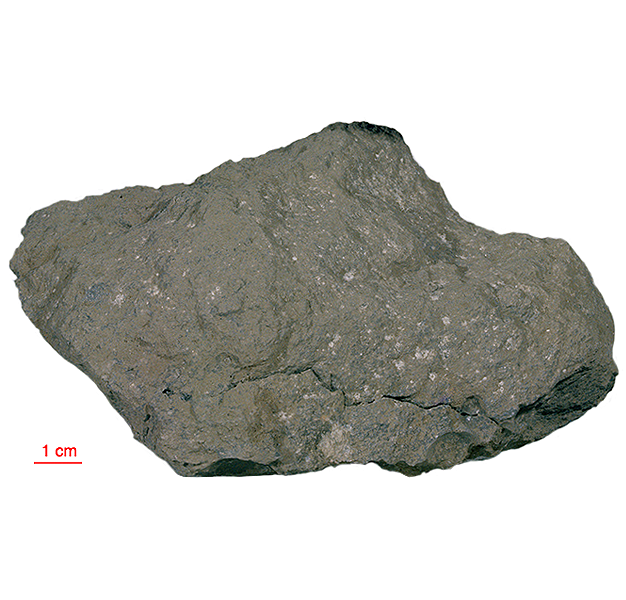
Fact sheet
15418 is a highly-shocked, granulitic breccia that has a chemical composition of “gabbroic anorthosite” – and has, from time to time, been considered as representative of a portion of the original lunar crust. The interior and main mass is a highly shocked, and previously brecciated, lunar granulite composed of ~70% anorthite and ~30% mafic (augite, orthopyroxene and olivine). In places within the rock the shock-melted, plagioclase has partially reacted with the mafic minerals. At high magnification many mineral grains in 15418 can be seen to have a high density of tiny pores (an unusual feature). The substructures of the minerals in 15418 suggest severe shock deformation. Much of the plagioclase has been shocked to maskelynite and/or to glass. Anorthite (calcic plagioclase) glass has recrystallized, often in spherulitic or rounded fibrous structures (see rotation 1).
The sample weighed 1141 grams before analysis and has been dated at 4.04±0.06 billion years (Ar/Ar).
Further details of this and other Apollo samples are here: http://curator.jsc.nasa.gov/lunar/
The Apollo 15 landing site was in the Apennine Highlands, and close to Hadley Rille — a long, narrow winding valley. Approximately 76 kg of lunar material, including soil, rock, core-tube and deep-core samples, were returned to Earth.
This mission was the first flight of the Lunar Roving Vehicle which allowed the astronauts to venture further from the Lunar Module than in previous missions. During three periods of extravehicular activity, or EVA, on July 31st, and August 1st and 2nd, Scott and Irwin completed a record 18 hours, 37 minutes of exploration, travelling 17.5 miles, in the first car that humans had ever driven on the Moon.
Apollo 15 was launched on 26 July 1971.






